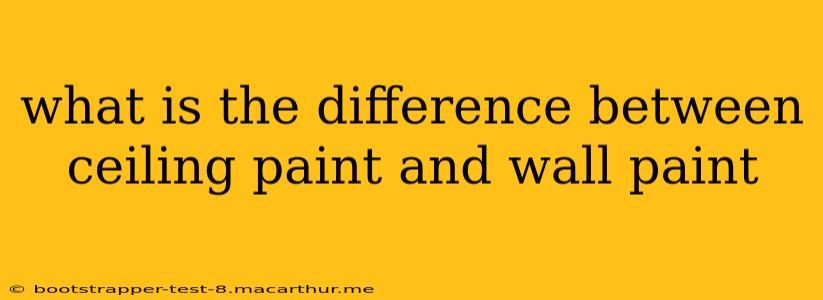What's the Difference Between Ceiling Paint and Wall Paint?
Choosing the right paint for your walls and ceiling can significantly impact the final look and longevity of your paint job. While both wall and ceiling paints are designed to cover surfaces and add color, several key differences make them uniquely suited for their respective applications. Understanding these distinctions is crucial for achieving a professional-looking finish that lasts.
This guide explores the fundamental differences between ceiling and wall paints, clarifying what sets them apart and helping you select the ideal product for your project.
1. Finish and Sheen:
One of the most noticeable differences lies in the finish. Ceiling paints generally have a flatter, matte, or eggshell finish. This is intentional, as it helps to minimize imperfections and hide any irregularities common on ceilings. A flat finish also reflects less light, making any imperfections less visible. In contrast, wall paints offer a broader range of sheens, from matte to high-gloss, allowing you to choose a finish that complements your décor and desired level of durability and washability. High-gloss paints, for example, are more easily cleaned but highlight imperfections more readily.
2. Durability and Washability:
Ceilings typically experience less wear and tear than walls, so ceiling paints are often formulated with less emphasis on durability and washability. While they are durable enough to withstand occasional cleaning, they aren't designed for frequent scrubbing. Wall paints, especially those with higher sheens, are formulated for greater durability and washability. This is because walls are more prone to scuffs, marks, and spills, necessitating paints that can withstand regular cleaning.
3. Hiding Power and Coverage:
Both ceiling and wall paints are designed to provide good coverage, but there might be subtle differences. Ceiling paints often prioritize excellent hiding power, masking imperfections and ensuring a uniform look. This is crucial given the large, often less-than-perfect surface area of ceilings. Wall paints also offer good hiding power, but the focus may shift depending on the chosen sheen and color. Darker colors, for instance, might require more coats regardless of the paint type.
4. VOC Content (Volatile Organic Compounds):
Ceiling paints often have lower VOC content than wall paints. This is because ceilings are generally higher up and there's less direct contact with the paint fumes. Lower VOC paints are better for indoor air quality, a factor that might be more crucial when painting walls where occupants spend more time. However, low-VOC wall paints are also readily available.
5. Drying Time:
While there's no significant universal difference, some ceiling paints might have slightly faster drying times to facilitate quicker completion of the often large ceiling surface area. However, always refer to the specific product's instructions for drying time.
What if I use the wrong paint?
Using wall paint on a ceiling isn't a catastrophic mistake, especially if you choose a matte or eggshell finish. However, the slightly higher sheen might accentuate imperfections. Using ceiling paint on walls is less advisable, especially in high-traffic areas or kitchens/bathrooms prone to spills and stains. The lower durability and washability could lead to premature wear and tear.
Choosing the appropriate paint for your project guarantees a smooth, long-lasting finish. By understanding the differences between ceiling and wall paints, you can make an informed decision that maximizes both the aesthetic appeal and the longevity of your paint job. Remember to always check the manufacturer's recommendations on the label for specific application instructions and drying times.
